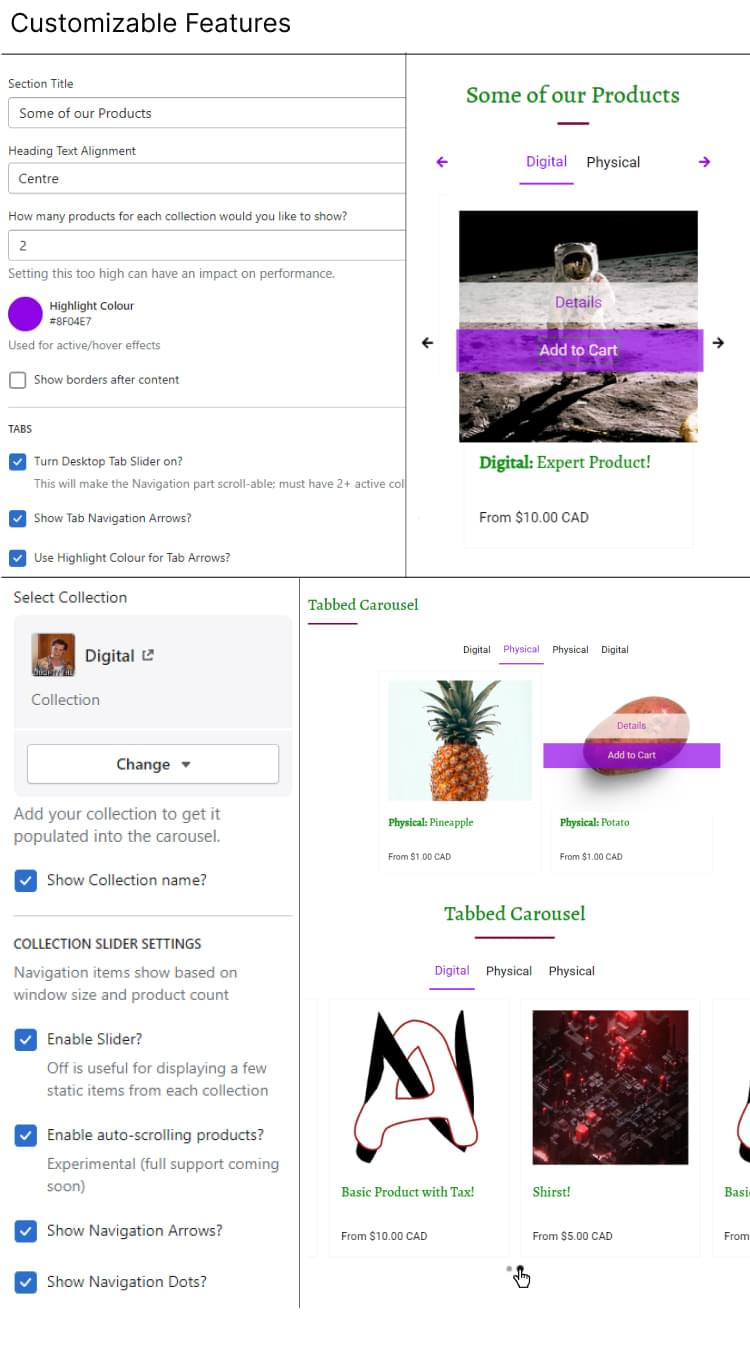Tabbed Carousel Plugin
Technologies Used
Versatile carousel plugin designed for e-commerce product display, featuring tabbed navigation to organize large product collections into manageable categories. Originally developed as a WordPress plugin for WooCommerce integration, the solution demonstrated remarkable adaptability when later evolved into a custom Shopify theme component during client platform migration. This cross-platform development approach showcased technical flexibility and the ability to maintain consistent functionality while adapting to different e-commerce architectures, from PHP/MySQL to Liquid/Shopify API ecosystems.
What's a carousel and why tab it?
A carousel (also called a slider) is a UI component that displays multiple items in a horizontal, swipeable format, allowing users or automation to control which items are visible. The "tabbed" aspect adds crucial organization by breaking large collections into smaller, categorized groups rather than overwhelming users with one massive carousel, significantly improving user experience and product discoverability.
E-commerce integration and WordPress usability
Originally developed for a product distributor using WooCommerce, this plugin was designed specifically to address e-commerce product display challenges and catalog management needs. The initial version integrated seamlessly with WooCommerce's product catalog system, automated inventory tracking, and category management. Featured custom shortcode snippets for easy embedding within WordPress's WYSIWYG editor, complete with UI capabilities for non-technical users to configure carousel settings, select product categories, and customize display options without touching code.
Cross-platform development
When the client later migrated from WordPress/WooCommerce to Shopify, the plugin successfully evolved into a custom theme component, demonstrating remarkable adaptability across different e-commerce platforms. This transition provided valuable experience in platform migration strategies, cross-platform development principles, and maintaining consistent functionality while adapting to each platform's unique architecture - from PHP/MySQL ecosystems to Liquid templates and Shopify's API-driven environment.
Performance and usability
Key focus areas included implementing smooth touch/swipe interactions, ensuring responsive design performance across all device types, and optimizing efficient loading of product images and metadata. The tabbed organization system significantly improved user experience by reducing cognitive load and allowing customers to focus on specific product categories, ultimately improving conversion rates and user engagement metrics.
